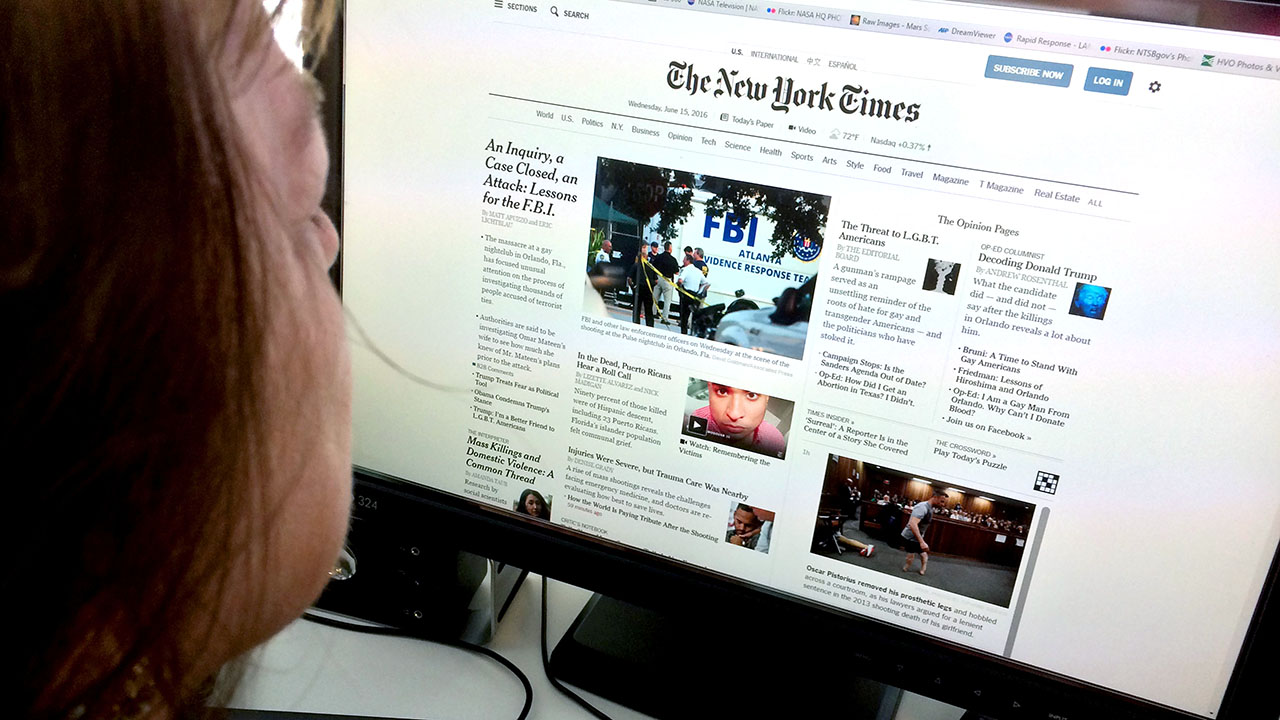Remain Informed with the current Reports from DW News
Remain Informed with the current Reports from DW News
Blog Article
The Evolution of Journalism in the Age of Information Online
In the swiftly transforming landscape of journalism, the digital age has introduced a brand-new period where the immediacy of online news reshapes both its creation and consumption. As electronic systems proliferate, they enhance interactivity and broaden the reach of journalism, yet concurrently test standard norms with the quick spread of information and misinformation alike. The surge of person reporters and independent voices additionally complicates the narrative, adding to a dynamic yet perilous media ecosystem. As we navigate these intricacies, one must question the future of journalistic integrity and exactly how it can be guarded amidst these transformative modifications.

Surge of Digital News Operatings Systems
The rise of electronic news systems has essentially changed the landscape of journalism, marking a shift from typical print media to dynamic, on the internet rooms. This development was moved by innovations in modern technology and the enhancing ease of access of the internet, which permitted information to be shared swiftly and generally. Unlike their print counterparts, digital systems can quickly upgrade content, giving real-time information insurance coverage and evaluation that interest the contemporary reader's need for immediacy and relevance.
Digital systems have actually additionally expanded the scope of journalism, enabling a diversification of perspectives and voices. With lower barriers to entrance, independent reporters and smaller sized wire service can get to international target markets, challenging the syndicate as soon as held by developed media corporations. This democratization of information has actually enhanced the general public discussion, using differed narratives and accommodating specific niche rate of interests that were previously underserved.
Additionally, the combination of multimedia aspects such as video clip, audio, and interactive graphics improves storytelling, making news more engaging and accessible (dw news). This multimedia come close to not only attracts a broader target market yet likewise aids in the comprehension of complex tales. Essentially, digital platforms have redefined journalism, promoting development and adaptability in an ever-evolving media environment

Effect of Social Network
Social media site systems have actually additionally reinvented journalism by modifying just how information is eaten and shared. These systems have democratized news dissemination, enabling anyone with net accessibility to report occasions in real-time. This immediacy has placed standard information outlets in a race to keep up, compelling them to adopt faster reporting approaches. In addition, social media sites has broadened audiences, approving journalists access to global viewership beyond geographical restraints.

The interactive nature of social media sites promotes engagement, permitting audiences to participate in conversations, share opinions, and add to news narratives. This communication enhances the vibrant between reporters and their audiences, advertising a much more participatory form of journalism. Nonetheless, this likewise places immense pressure on journalists to generate material that resonates with target markets, commonly prioritizing sensationalism to record attention.
Furthermore, social media systems have actually come to be vital tools for journalists to resource tales, determine public opinion, and network with industry peers. The reliance on social media likewise requires a critical assessment of sources to make sure the reputation of details shared.
Challenges of False Information
Among the digital change of journalism, one considerable difficulty is the prevalent spread of misinformation. In a period where details is swiftly obtainable and bountiful, comparing qualified information and made content has actually become increasingly tough. The sheer volume of info disseminated across different online platforms usually blurs the line in between truth and fiction, presenting a significant danger to the stability of journalism.
Misinformation can spread swiftly with social networks, where algorithms focus on involvement over accuracy, inadvertently amplifying incorrect stories (dw news). This not only undermines public rely on media establishments however also cultivates an atmosphere where deceptive web content can influence popular opinion and decision-making procedures. The difficulty for reporters is twofold: to expose frauds successfully and to promote strenuous standards of fact-checking and confirmation
More complicating this problem is the visibility of deepfakes and advanced disinformation campaigns that utilize advanced modern technologies to produce deceptive material indistinguishable from legit reporting. As these innovations evolve, so need to the devices and strategies utilized by reporters to combat them. Attending to misinformation needs cooperation between media companies, modern technology companies, and policymakers to create thorough techniques that guard the authenticity of why not check here info in the electronic age.
Duty of Citizen Journalists
Browsing the landscape of false information highlights the transformative impact of resident reporters within the electronic world. As standard media outlets face the large speed and volume of news circulation online, person reporters-- common people equipped with mobile phones and accessibility to social media sites-- are playing an increasingly critical function. These grassroots factors have actually come to be instrumental in covering events swiftly, commonly giving real-time updates from the ground prior to mainstream media can react.
Resident journalists have democratized information coverage, intensifying voices that could or else continue to be unheard. By leveraging systems like Twitter, Facebook, and Instagram, they offer varied perspectives that test the narratives regularly pressed by developed media. This democratization, nonetheless, additionally offers obstacles. The lack of official training or content oversight can cause the spread of unproven info, complicating initiatives to identify reality from fiction.
However, person journalism is improving the media landscape, compelling traditional electrical outlets to adjust by integrating user-generated material right into their reporting. By fostering area involvement and encouraging participatory journalism, these digital authors add to a more inclusive and dynamic news ecosystem. As citizen journalists remain to progress, their role fit public discourse remains an important part of contemporary journalism.

Future of Journalistic Stability
The expansion of electronic platforms has democratized details circulation, enabling a bigger array of voices to add to the news landscape. This has actually additionally led to the spread of misinformation and the erosion of trust in media.
The surge of expert system and algorithm-driven web content curation even more complicates the landscape. While AI can improve coverage by analyzing large datasets and determining fads, it likewise presents threats of predisposition and adjustment. Journalists must consequently stay vigilant, making sure that technology acts as a device for reality as other opposed to distortion.
In addition, the financial pressures on traditional media electrical outlets require innovative organization designs to sustain top quality journalism. Subscription-based designs, not-for-profit funding, and partnerships with technology companies are becoming possible options. Yet, they should be sought without jeopardizing content self-reliance.
Inevitably, the future of journalistic stability depends on the commitment of media and journalists companies to support openness, liability, and an unfaltering dedication to fact, amidst a quickly changing digital globe.
Conclusion
The evolution of journalism in the digital age presents both difficulties and possibilities. The surge of digital news platforms and social media has democratized information circulation, encouraging a varied selection of voices, consisting of person reporters.
The surge of electronic information systems has essentially transformed the landscape of journalism, marking a shift from conventional print media to dynamic, online rooms. With reduced obstacles to entrance, independent journalists and smaller news organizations can get to international target markets, testing the monopoly once held by established media empires.Social media systems have actually further transformed journalism by changing how news is eaten and shared. As standard media outlets grapple with the sheer rate and quantity of news dissemination online, person reporters-- normal individuals armed with mobile phones and continue reading this access to social media-- are playing an increasingly crucial function. The rise of electronic information platforms and social media has actually equalized information circulation, encouraging a diverse array of voices, consisting of resident journalists.
Report this page